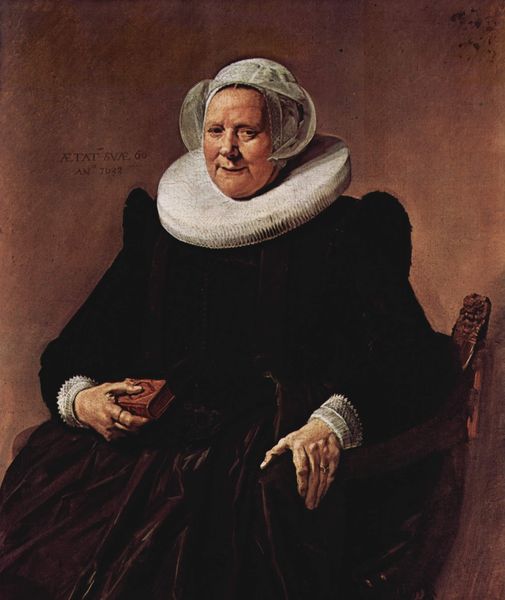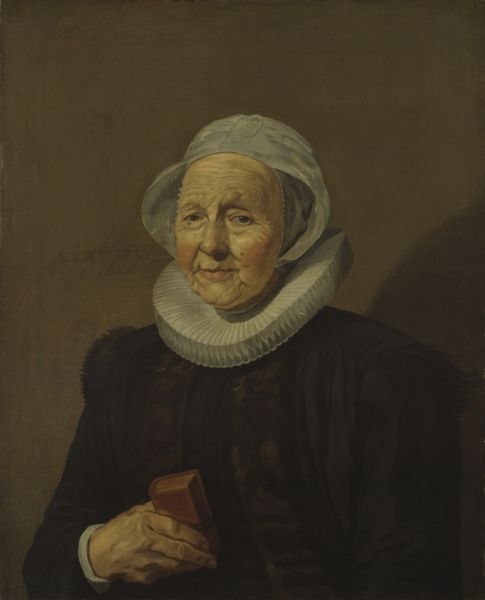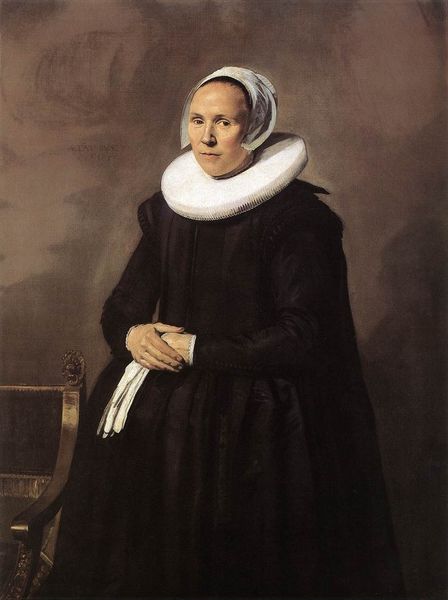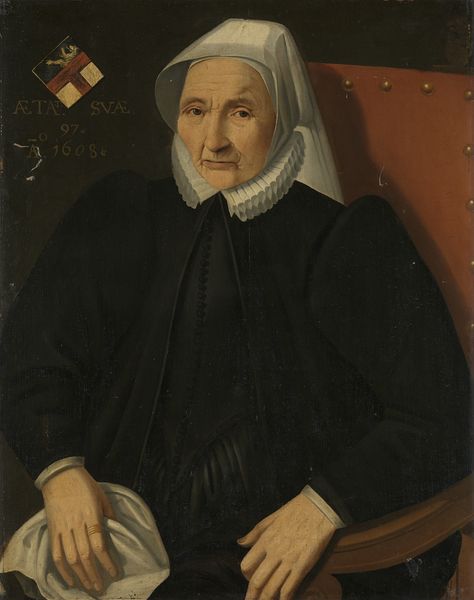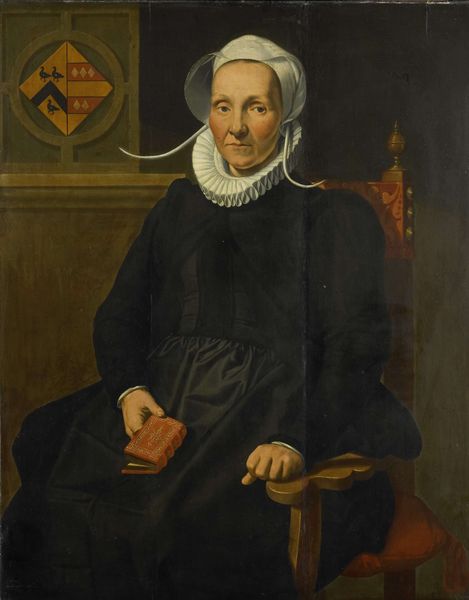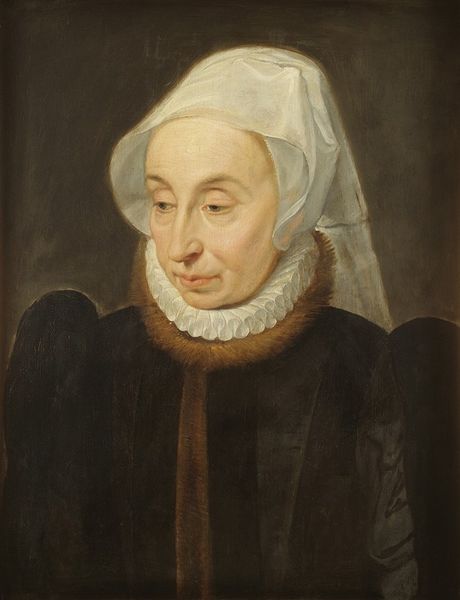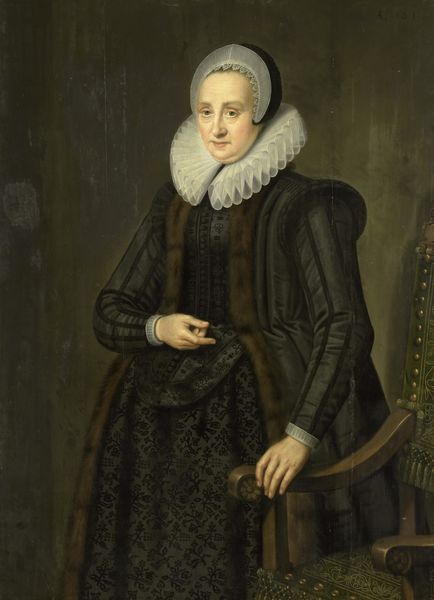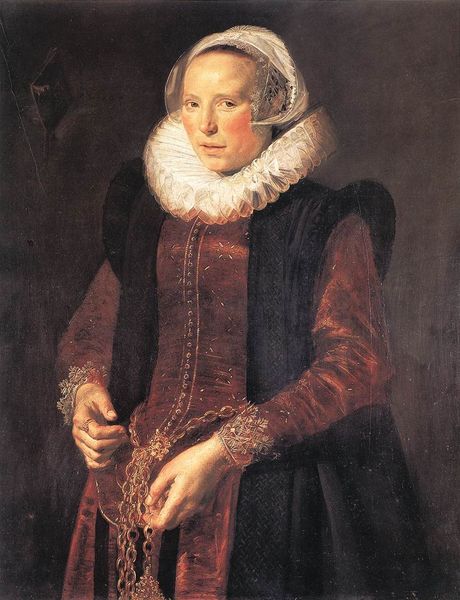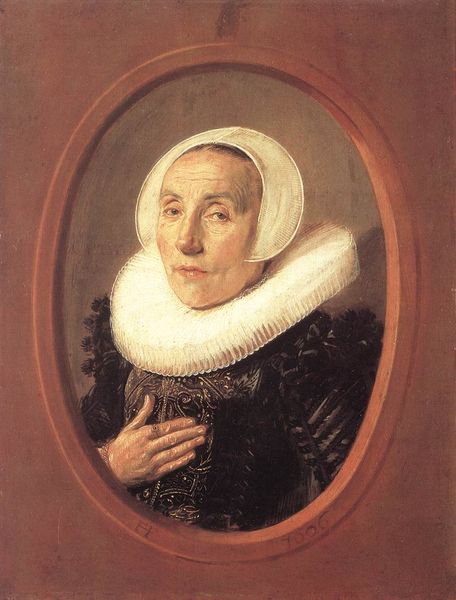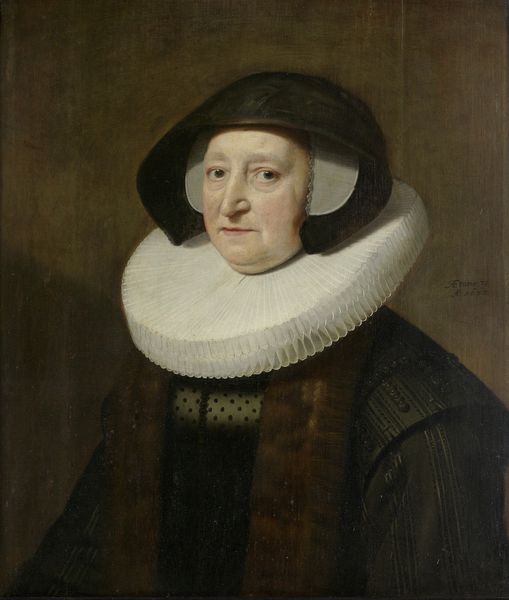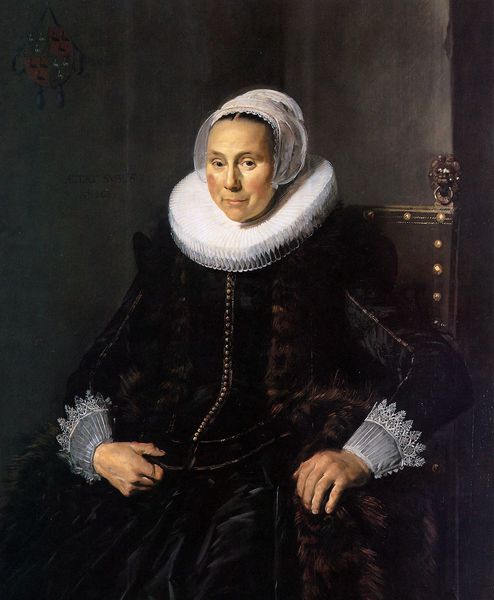
painting, oil-paint
#
portrait
#
baroque
#
dutch-golden-age
#
painting
#
oil-paint
#
academic-art
#
realism
Copyright: Public domain
Curator: Here we have Frans Hals' portrait of "Maritge Voogt Claesdr." Hals was a leading portrait painter of the Dutch Golden Age. Editor: Immediately striking is the sharp contrast—the radiant white ruff and cap against the deep blacks and browns. The composition centers on her gaze; she appears both stern and quietly self-assured. Curator: It’s fascinating to consider Hals’s impact on the social construction of identity through commissioned portraiture. He was creating a brand for wealthy individuals like Maritge Voogt. Consider, for example, how labor division dictated that ruffs like hers would require specialized textile artisans. Editor: Focusing on the visual language, the dynamism of the brushstrokes! Hals avoids meticulous detail in favor of capturing the essence of form and texture. Note how the handling of light across her face suggests both age and character. It’s a very studied application of realism within Baroque conventions. Curator: And let's not overlook that coat of arms, displayed upper left, signaling family lineage, a commodity to be bought and consumed alongside textiles. Her position as the wife of a wealthy merchant is clearly coded. It's a statement of access and status in 17th-century Haarlem. Editor: But does such specific identification enrich our interpretation, or does it limit it? To me, her expression carries a weight of experience that speaks more universally of endurance, which has aesthetic value independently of those social markers. The work also balances the cool reserve of Dutch painting against Italianate theatrical drama—evident in that dramatic contrast. Curator: The context informs the impact. Without recognizing that status portrayal was a paid service—Hals produced images like other craftsmen of the period—we miss the true radicalism that lies in depicting emerging class identity through the language of materialism. Editor: I am thinking instead of that slight tilt of the head, or those hands so beautifully and naturally arranged. These details speak more to an inner state than material conditions. Curator: It does remain powerful on multiple levels, wouldn’t you agree? From her place in a mercantile economy to the formal acuity with which her person is represented. Editor: Precisely, it encourages a multifaceted viewing, bridging material concerns with more formal and elemental appeals.
Comments
No comments
Be the first to comment and join the conversation on the ultimate creative platform.
